Textiles and silver and chairs! Oh, my!
I recently returned from having spent two weeks participating in the Winterthur Institute, which is an intensive course on decorative arts. Winterthur, the former residence of Henry Francis du Pont, is a museum of 175 rooms which house a collection of 90,000 decorative and fine arts objects made or used in America between 1640 and 1860. Our Institute class of twenty comprised people from cultural institutions, appraisers, archaeologists, graduate students, interior decorators, and collectors from as far away as California, Arizona, and Texas. Having a diverse group with different perspectives really enhanced the experience.
Mornings consisted of lectures with hands-on workshops, and we went on house tours in the afternoon to illustrate what was discussed. Being able to work one-on-one with the collection helped reinforce what we learned. For example, a lecture on silver by the Metropolitan Museum’s curator Beth Carver Wees was followed with a workshop where we were able to handle silver pieces such as a Paul Revere tankard. The Institute provided me with a good understanding of different types of mediums and also how to differentiate between stylistic (Queen Anne, Federal, Empire, etc.) and regional variations (Philadelphia, New York, Baltimore, etc.).
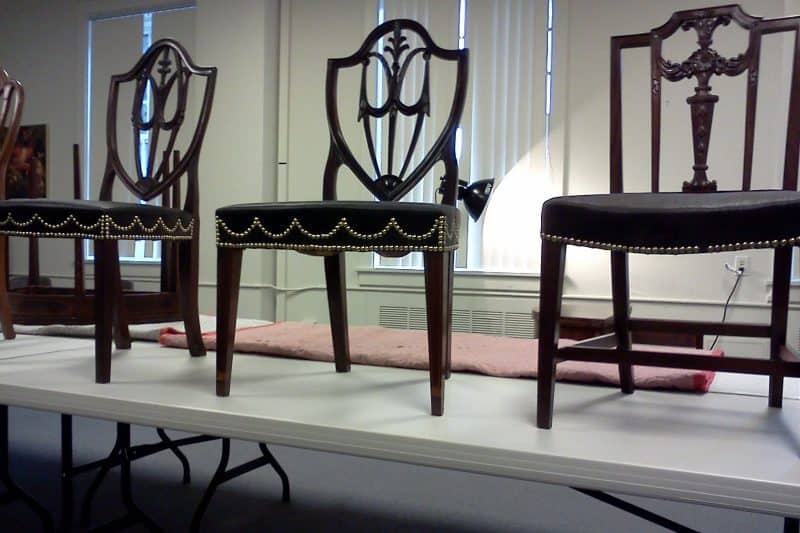
Federal furniture workshop where we examined chairs and card tables.
Some of the most enlightening sessions for me were the demonstrations with wood. We watched how mortise and tenon and dovetail joints are made, as well as how inlay and veneer work are done. Furniture maker Stephen Latta made different types of ornamental banding and inlay designs, showing how scorching pieces in hot sand creates a shadow effect. It dramatically changed how we understood and examined furniture.
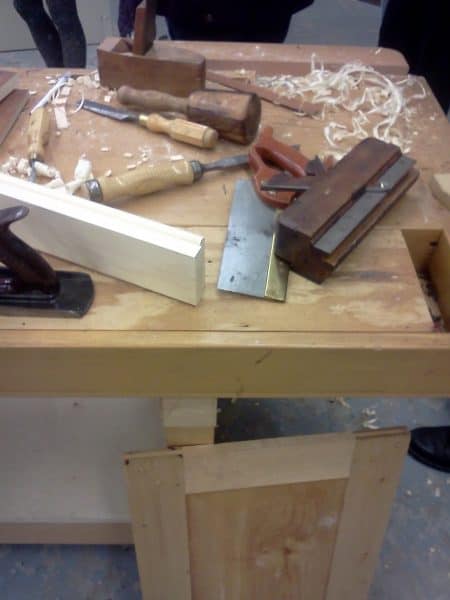
Some of the tools used in joinery.

Examples of legs with inlay designs made by Stephen Latta.
Touring the conservation lab, we saw objects in various stages of treatment. Winterthur and the University of Delaware jointly run a conservation program, and one of their students showed us how she stitched a tear in a painting using a microscope. They told us that patience is the most important trait for a conservator, and I could definitely see why!
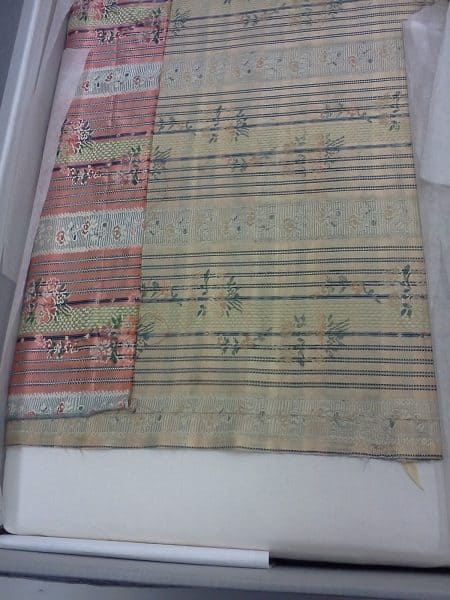
A textile where the right side was exposed to sunlight, which completely faded the color.
Additionally, we went on a field trip to Odessa, DE, to see several historic houses and to Newcastle, to see the home George Read, Jr., built in 1801, a wonderful example of Georgian architecture. Read wanted a house just like the ones he saw in Philadelphia.
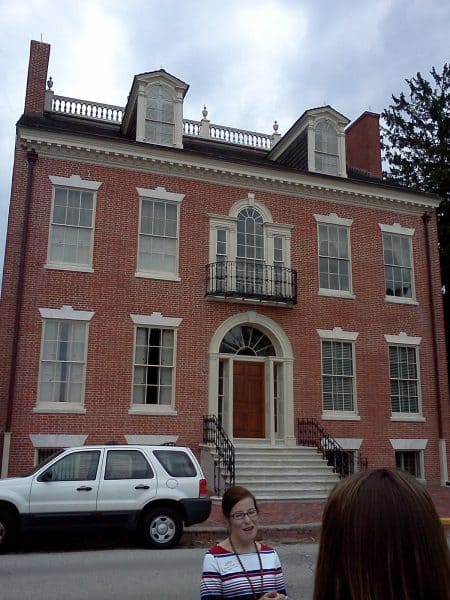
Read House and Gardens in New Castle, Delaware.
One of the things that most interested me was the influence of printed sources on design, and how certain images were copied across various mediums. It was fascinating to see the similarities and differences in printing techniques on textiles (block printing) and transferware ceramics, which initially used copperplates on hide glue (which is almost like gelatin), then later wet tissue paper. I’m also interested in craftsmen who were Library Company members (which includes cabinetmakers William Savery and Benjamin Randolph), the books they had access to, and how those books influenced their work. I’m excited to apply what I learned to our collection of art & artifacts.
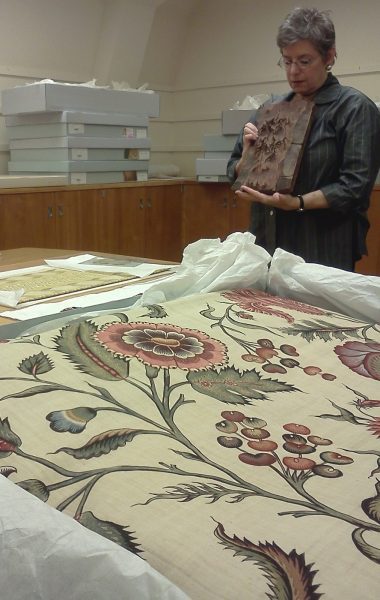
Curator Linda Eaton shows us woodblock printing on textiles.
Linda August
Reference Librarian and Curator of Art & Artifacts
1314 Locust St., Philadelphia, PA 19107
TEL 215-546-3181 FAX 215-546-5167
http://www.librarycompany.org


Leave a Reply
Want to join the discussion?Feel free to contribute!